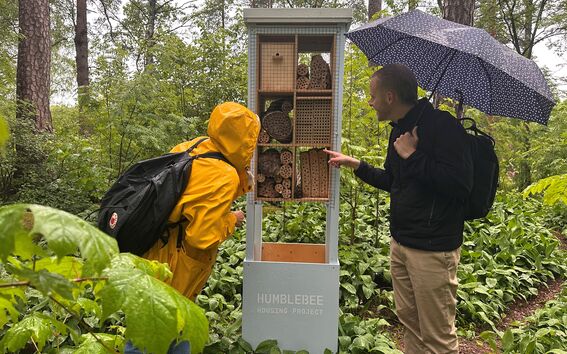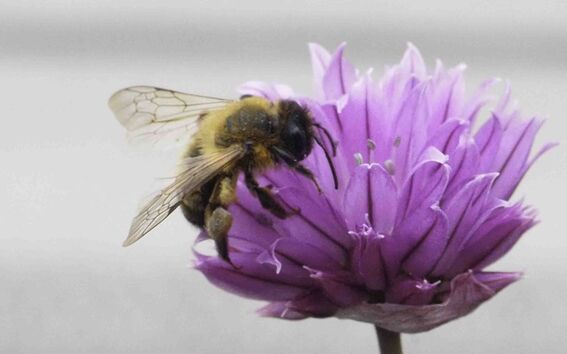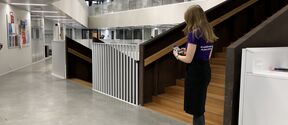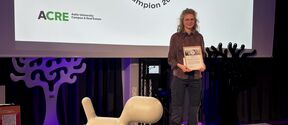Pollinators – tiny helpers in the work for biodiversity

Pollinators are vital to the functioning of the entire ecosystem. Their importance for plant reproduction, crop formation and also human food production is irreplaceable. However, pollinator populations have collapsed in many places due to, among other things, the loss of habitats.
Creating and maintaining pollinator-friendly habitats is a key measure to safeguard biodiversity and the functioning of the entire ecosystem. On campus, this has been taken into account by providing nesting sites for wild pollinators, for example, through silvicultural measures that leave standing stumps and fallen trees in the terrain, as well as rotten wood of different ages and varying tree species. In addition, a wide variety of plants supports the characteristics of different pollinators (for example, depending on tongue length). The variety uses both pioneer species and slower-developing plants, and species that flower at different times. In addition, for example, the timing and frequency of mowing meadow areas is regulated so that flowering plants have enough time to produce seeds and provide food.

Bees as sample collectors
Bee-assisted biomonitoring is being carried out on the Otaniemi campus: a bee tower has been brought to the campus, populated by native bees. While the bees gather food within a radius of approximately 600-800 meters from their nest site, they carry a large amount of DNA material from the surrounding nature to the nest.
The samples collected during the summer will be analyzed in the laboratory, and the data produced will allow us to monitor the development of pollinator food plant diversity on campus. In addition, the research will enable the monitoring of invasive and endangered species.
The results can be used to make concrete proposals, for example, about what plants should be planted in the area and otherwise help guide measures in a direction that better takes into account the needs of pollinators. In addition to research, the pollinators contribute to the field by pollinating plants in meadows, for example, which means they produce better seeds and the meadows remain vibrant with less effort.
After the summer, the residents of the campus beehive tower will move on to other nesting sites in the surrounding area and enrich the local pollinator population. This is why it is important that, for example, decaying trees and other nesting sites are left in the campus nature.
This project is a collaboration between the City of Espoo, Senate Properties, and the HumbleBee Housing Project - because bees, after all, don’t care about property lines.
Listen below to what happens in the beehive
The audio track features Aapo Reuters from HumbleBee Housing Project, Hannes Helminen from Senate Properties and Minttu Somervuori from ACRE.
- Updated:
- Published: This content was originally published on www.aalto.fi.
Read more news

Temporary traffic arrangements on Lämpömiehenkuja and Metallimiehenkuja
The new arrangements will be implemented starting Monday, November 24, 2025.
Accessible routes in Aalto Space application
You can also choose an accessible route for navigation on campus.
Use your voice: 14 000 euros for student wellbeing
In autumn 2025, students were asked to come up with ideas on how the university should spend 14 000 euros to improve student wellbeing on campus. Now it's time to vote for the best idea to be implemented during spring 2026.